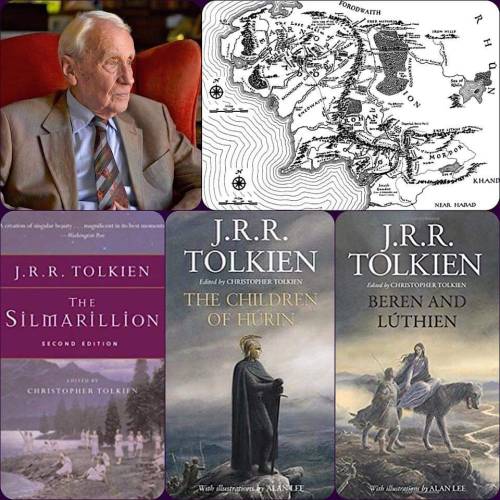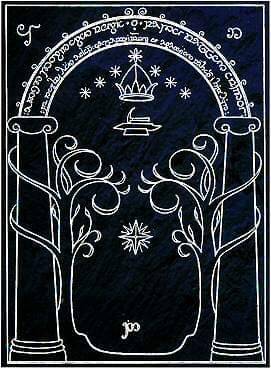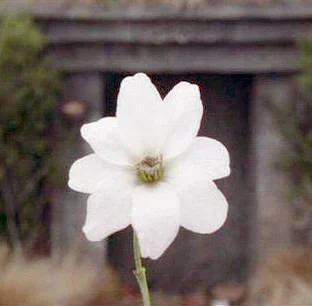
90 posts
Happy Posthumous Birthday Christopher John Reuel Tolkien (1924 - 2020), Who Is The Third & Youngest Son

Happy Posthumous Birthday Christopher John Reuel Tolkien (1924 - 2020), who is the third & youngest son of the author J.R.R. Tolkien (1892-1973), as well as the editor of much of his father's posthumously published work. He drew the original maps for his father's #TheLordOfTheRings books, which he signed as C.J.R.T.
From a child, Christopher Tolkien had long been part of the critical audience for his father's fiction, such as listening to his father’s tales of Bilbo Baggins, which were published as #TheHobbit. As a teenager and young adult, he offered a lot of feedback on “The Lord of the Rings” during its 15-year development. He also had the task of interpreting his father's sometimes self-contradictory maps of Middle-earth in order to produce the versions that were used in the books. He re-drew the main map in the late 1970’s to clarify the lettering and correct some errors and omissions.
J.R.R. Tolkien had written a large amount of material connected to the Middle-earth legendarium that was not published during his lifetime. He had originally intended to publish #TheSilmarillion along with “The Lord of the Rings”, and parts of it were in a finished state when he died in 1973; but the project was incomplete.
Once referring to his son Christopher as his "chief critic and collaborator", J.R.R. Tolkien had named Christopher his literary executor in his will. With this authority, Christopher organized the masses of his father's unpublished writings, some of which had been written on odd scraps of paper a half-century earlier. Much of the material was handwritten. Complicating matters, his father would sometimes write a newer draft over a half-erased first draft. Also, it was not uncommon for the names of characters routinely changing between the beginning and ending of the same draft.
Christopher worked on the manuscripts and was able to produce an edition of “The Silmarillion” for publication in 1977. His assistant for part of the work was Guy Gavriel Kay, who became a noted fantasy author himself.
“The Silmarillion” was followed by “Unfinished Tales” in 1980 and “The History of Middle-earth” in 12 volumes between 1983 and 1996. Most of the original source-texts have been made public from which “The Silmarillion” was constructed.
In April 2007, Christopher Tolkien published “The Children of Húrin”, whose story his father had brought to a relatively complete stage between 1951 and 1957 before abandoning it. This was one of J.R.R. Tolkien's earliest stories. Its first version dated back to 1918, and several versions were published in “The Silmarillion”, “Unfinished Tales”, and “The History of Middle-earth”.
“The Children of Húrin” is a synthesis of these and other sources. “Beren and Lúthien” is an editorial work and was published as a stand-alone book in 2017. The next year, “The Fall of Gondolin” was published also as an editorial work. “The Children of Húrin”, “Beren and Lúthien”, and “The Fall of Gondolin” make up the three "Great Tales" of the Elder Days, which J.R.R. Tolkien considered to be the biggest stories of the First Age.
Christopher served as chairman of the Tolkien Estate, Ltd., which was the entity formed to handle the business side of his father's literary legacy. He also served as a trustee of the Tolkien Charitable Trust until his retirement in 2018.
In 2001, Christopher expressed doubts over “The Lord of the Rings” film trilogy that was directed by Peter Jackson. He questioned the viability of a film interpretation that retained the essence of the work, but stressed that this was just his opinion. In 2008, he commenced legal proceedings against New Line Cinema, which he claimed owed his family £80 million in unpaid royalties. In September, 2009, he and New Line reached an undisclosed settlement. He also withdrew his legal objection to “The Hobbit” films. But, in a 2012 interview with “Le Monde”, he criticised the films saying, "They gutted the book, making an action film for 15 to 25-year-olds."
-
 swiftsnowmane liked this · 1 year ago
swiftsnowmane liked this · 1 year ago -
 mirra-kan liked this · 1 year ago
mirra-kan liked this · 1 year ago -
 vero4kasun liked this · 1 year ago
vero4kasun liked this · 1 year ago -
 awehaven liked this · 1 year ago
awehaven liked this · 1 year ago -
 samvimesbootstheory liked this · 1 year ago
samvimesbootstheory liked this · 1 year ago -
 salacious-b-dumb liked this · 1 year ago
salacious-b-dumb liked this · 1 year ago -
 aceofspades45 liked this · 1 year ago
aceofspades45 liked this · 1 year ago -
 elvesinponytails liked this · 1 year ago
elvesinponytails liked this · 1 year ago -
 nikotheweirdo liked this · 1 year ago
nikotheweirdo liked this · 1 year ago -
 thehalftrollscholar liked this · 1 year ago
thehalftrollscholar liked this · 1 year ago -
 bluebonnet2000 liked this · 1 year ago
bluebonnet2000 liked this · 1 year ago -
 laurelins-light liked this · 1 year ago
laurelins-light liked this · 1 year ago -
 sublimepaperfury reblogged this · 1 year ago
sublimepaperfury reblogged this · 1 year ago -
 prince-of-syne liked this · 1 year ago
prince-of-syne liked this · 1 year ago -
 aureentuluva70 liked this · 1 year ago
aureentuluva70 liked this · 1 year ago -
 xan-from-space liked this · 1 year ago
xan-from-space liked this · 1 year ago -
 catandcaboodle liked this · 1 year ago
catandcaboodle liked this · 1 year ago -
 rinawriteswhatsheloves liked this · 1 year ago
rinawriteswhatsheloves liked this · 1 year ago -
 mcklunkers liked this · 1 year ago
mcklunkers liked this · 1 year ago -
 tomside568 liked this · 1 year ago
tomside568 liked this · 1 year ago -
 superloves4 liked this · 1 year ago
superloves4 liked this · 1 year ago -
 urbanshaman30 liked this · 1 year ago
urbanshaman30 liked this · 1 year ago
More Posts from Urbanshaman30

"Ulmo loves both Elves and Men, and never abandoned them, not even when they lay under the wrath of the Valar."
(The Silmarillion, Valaquenta: Of the Valar)
Ulmo, Lord of Waters by John Howe

Hack the city,,

Arwen means "Noble Maiden" in Sindarin, from ara- ("noble") and gwenn ("maiden"). Tolkien remarked that it also means "greatly blessed" in Welsh.
The Quenya form of her name is not entirely certain, but in his Quenya greeting, Aragorn refers to her again as "Arwen" (Arwen vanimelda, namárië!). This suggests that the form Arwen itself is also coincidentally a valid, or at least understandable, Quenya calque (using ar-, stem Arwend-).
Other names:
Her epessë, Undómiel, means "Evenstar", from Undómë ("evening twilight") and el ("star").
She is also given the names Elrenniel and Elerondiel, both meaning "Daughter of Elrond" in Sindarin and Quenya respectively.

The Doors of Durin, also called the West-gate or the West-door, formed the western entrance to Moria. When shut, the gates were invisible and impossible to open by physical means. They were however decorated with designs engraved in ithildin made by the elf-Lord Celebrimbor of Eregion and the dwarf Narvi from mithril mined in Moria. The designs included the emblems of Durin, the two trees of the High Elves, and the Star of the House of Fëanor. Tolkien's drawing of the designs on the Doors of Durin was the only illustration in The Lord of the Rings during his lifetime (other than cover-art and calligraphy). In moonlight, a password made the designs visible. The designs contained a second password to open the doors. When the Fellowship entered, the Watcher in the Water, the aquatic guardian of the gates, slammed the doors shut with its tentacles, plunging the Fellowship into darkness.
The inscription was in the Elvish language of Sindarin, using the Tengwar script: Gandalf translates it as "The Doors of Durin, Lord of Moria. Speak, friend, and enter. I, Narvi, made them. Celebrimbor of Hollin drew these signs". Scholars have commented that "Moria", an unfriendly Elvish description meaning "The Black Pit", was hardly how a ruler of Khazad-Dûm would choose to describe his realm; and that since the name was not used until the Balrog was awakened in the Third Age, it was also anachronistic. Possible resolutions have been proposed: that Celebrimbor had foresight of the name; that the magic lettering reshaped itself; or that Gandalf indeed saw the Sindarin name "Hadhodrond" on the door, and read it out as "Moria" for the benefit of those listening (and in the same way, he must have seen "Eregion" and read out "Hollin").

THEODEN
Simbelmyne. Ever has it grown on the tombs of my forebearers. Now it shall cover the grave of my son. Alas, that these evil days should be mine. The young perish and the old linger. That I should live to see the last days of my house.
GANDALF
Theodred's death was not of your making.
THEODEN
No parent should have to bury their child.